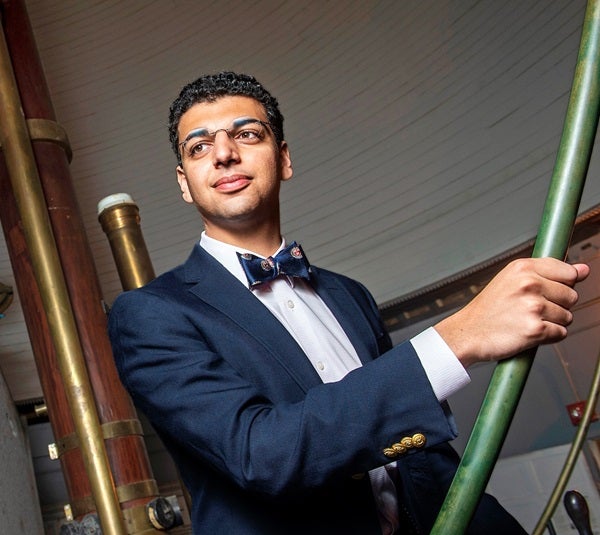More than three years ago, Amir Siraj was looking through a database from NASA’s Center for Near-Earth Object Studies (CNEOS) when he took notice of an object designated CNEOS 2014-01-08, which landed near Papua New Guinea in 2014. Siraj and his advisor, astrophysicist Avi Loeb of Harvard University, calculated the space rock’s trajectory and unexpectedly found it came from outside our solar system.
“This was surprising,” says Siraj, 22, of Brookline, Massachusetts, who has already published more than 30 academic papers. “People have been searching for these things since the 1950s. Every rock we know that has hit the Earth has come from our solar system.”
The two were ready to publish their results, but they had a problem. The find remained unconfirmed because it was still considered classified information. “This object was so clearly interstellar,” Siraj says. “But journals didn’t like the uncertainties.”
For three long years, their research remained unpublished as Siraj and Loeb tried to make contact with government officials. Finally, in April 2022, the U.S. Space Force tweeted a copy of the memo that Lt. Gen. John Shaw sent to Siraj and Loeb. The memo confirmed the data — the meteorite was indeed interstellar and the first of its kind. (Editor’s note: Siraj and Loeb’s research on the apparent interstellar object was published Nov. 2 in The Astrophysical Journal. The authors write, “[W]e rely on [the Space Force memo] as confirmation of the object’s interstellar trajectory.”)
“This changes history,” says Loeb. “The meteor was the first interstellar object ever discovered.”
For Siraj, who graduated this spring with both a bachelor’s and a master’s degree in astrophysics from Harvard, the memo was a nicely timed graduation gift. However, he’s taking a break from astrophysics during the 2022/23 school year to complete his master’s in piano performance at the New England Conservatory of Music.
Siraj has been studying piano since he was 4 years old. In 2017, he was selected during his senior year of high school as one of 161 students to earn a U.S. Presidential Scholar in the Arts Award. A dual-degree program allowed him to study both theoretical physics at Harvard and piano performance at the conservatory.
Siraj plans to return to astrophysics and pursue his doctorate, as well as secure a piece of the interstellar meteorite he helped identify. “It exploded off the coast of Papua New Guinea. Supposedly, there should be fragments at the bottom of the ocean floor,” Siraj says.
Soon after the Space Force memo was released, Siraj and Loeb connected with researchers at the National Oceanic and Atmospheric Administration to begin planning meetings on how to retrieve a piece of the interstellar space rock. “The hope is we might be able to retrieve the first piece of interstellar material that is bigger than dust,” Siraj says.
Loeb says that Siraj’s optimism for his research can be infectious, adding that older scientists can benefit from it. “Sometimes young people can find things that more senior, accomplished experts do not. That is what makes science exciting.”
Make sure to explore our full list of 25 rising stars in astronomy. Check back each week for a new profile!
To get the latest astronomical news and observing content delivered directly to your door, subscribe to Astronomy magazine today!










